There are few constants in life. Death, taxes, and maybe Steve Martin, whose epic fifty-year run as a comedian, musician, playwright, novelist, art collector, and all-around American institution will be examined in the Apple TV+ documentary STEVE! (Martin) A Documentary in 2 Pieces.
Premiering on March 29, the two-part documentary from director Morgan Neville (Won’t You Be My Neighbor, Roadrunner: A Film About Anthony Bourdain) promises insight into the famously private and enigmatic Martin’s life and career, from his meteoric rise to stand-up stardom and subsequent career as a big screen leading man to his startling choice to leave stand-up, embrace his musical and artistic pursuits, and occasionally emerge to remind us why he’s one of the most hilarious, talented, and all-around fascinating figures in American entertainment.
So here are our choices of the 50 Coolest Things Steve Martin Ever Did:
He Smoked Dope with Dalton Trumbo
Still in his coffeehouse-playing days, the pre-fame Martin for a time dated Mitzi Trumbo, daughter of famously blacklisted screenwriter and author Dalton Trumbo (Spartacus, Papillon, Lonely Are the Brave). After Donner one night, a 20-year-old Martin found himself passed a joint as part of a political conversation featuring Trumbo and fellow Hollywood Ten target Ring Lardner, Jr. According to Martin, the aging Trumbo didn’t know how to inhale properly, but the young comic was still suitably impressed.
He Was Nominated For an Oscar in 1977
Martin wrote and starred in the seven-minute short film The Absent-Minded Waiter, in which he portrays—an absent-minded waiter. Essentially a showcase for Martin’s just-catching-on comedy persona (his first stand-up album Let’s Get Small came out the same year), Martin’s unctuous waiter heedlessly pours water on diners Terri Garr and Buck Henry before placing down glasses, gets their orders hilariously incorrect (the increasingly irate Garr did not order the lard omelette), and, at one point, freezes for a smiling eternity before apologizing, “Sorry, just went to the Bahamas for a moment.” The payoff comes when the patient Henry receives $10,000 in change for a meal the couple never got. The film, directed by Martin’s pal and Jaws screenwriter Carl Gottleib received an Academy Awards nomination for Best Live Action Short Film but lost, depriving audiences of no doubt one of the greatest acceptance speeches ever.
He Was Almost Tom Cruise
While appearing in England at the height of his stand-up popularity in 1980, Martin received an unexpected call from legendary director Stanley Kubrick. A noted fan of Martin’s (he loved The Jerk), Kubrick summoned Martin to his estate and pitched the comic the lead role in what would eventually become Kubrick’s final film, Eyes Wide Shut. And while this more absurdly comic iteration of Kubrick’s long-gestating adaptation of Arthur Schnitzler’s novella Traumnovelle was very different from what eventually emerged as 1999’s Tom Cruise-Nicole Kidman starring drama of sexual intrigue, it’s still fascinating to imagine the 1980’s Martin persona in the center of the protagonist’s erotic misadventures in high society masked sex parties.
He Stole (With Permission) the Joke That Saved His Job
Struggling to find his way as part of the Smothers Brothers Comedy Hour, the 21-year-old Martin was tasked with coming up with sketch introduction by Tom Smothers, with the clear implication that failure would mean the end of the comic’s fledgling TV writing career. Drawing a complete blank, Martin thought of the perfect joke—one that belonged to his roommate, stand-up Gary Mule Deer. Thankfully, Mule Deer gave permission for the desperate Martin to use his bit, leading to Dick Smothers announcing, “It has been proven that more Americans watch television than any other appliance.”
Elvis Liked His Stand-Up
Opening for Ann-Margaret in 1971 Las Vegas was a big step for the young Steve Martin, despite the high-rolling crowds not necessarily getting his vibe. Still, Martin got the ultimate Vegas experience one night when Ann-Margaret’s pal Elvis Presley turned up backstage and, spotting Martin standing awestruck in the corridor, uttered in praise, “Son, you have an ob-leek sense of humor.” A later dressing room drop-by saw the King show Martin the guns he kept concealed in his dress whites.
He Led His Audience Right Into the Deep End
At a late ’60’s college gig, Martin was nonplussed when the audience wouldn’t leave. Packing up his props on a classroom stage with no backroom to retreat to, Martin attempted to shoo the curious kids away with a non-nonsense, “It’s over,” to no avail. So Martin left, with the crowd, apparently thinking this was all part of Martin’s conceptual comedy, following en masse as Martin made his way across campus. Spotting a drained swimming pool, Martin then ordered everyone into the water-less structure and, once assembled, crowd-surfed his way across the stubbornly assembled audience. In another gig later that year, Martin led his worshipful crowd out to the street, hailed a cab, and then drove off, leaving them wondering how long to stick around for the punchline.
A Famous Comic Song Helped Him Not Get Shot With Ping-Pong Balls
A very early stand-up gig at San Francisco’s Coffee and Confusion coffeehouse saw the young and nervous Martin spotting a scruffy regular in the audience with a gun. Sure, it only shot ping-pong balls (at would-be performers the guy didn’t like), but that was stressful enough. Strumming his ever-present banjo and preemptively flinching, the young Martin then debuted what would become one of the standout bits from his 1977 debut comedy album, Let’s Get Small. Introduced as something his beloved granny used to sing to him, Martin’s lyrics start with the innocuous advice, “Be courteous, kind, and forgiving,” before deadpan segueing into prompts to “Be pompous, obese, and eat cactus,” “Criticize things you don’t know about,” and “Be oblong and have you knees removed.” The gun stayed holstered.
He’s One of the Only ‘Comedy Magicians’ People Can Stand
The teenaged Martin famously found a home at the just-opened Disneyland (and later at competitor Knott’s Berry Farm), first selling programs and then demonstrating tricks at the in-park magic shop. And while Martin’s youthful skills as an illusionist never progressed much beyond the birthday party stage, the gig gave him the performing bug, while the tricks and patter taught Martin the value of precision of tone and movement that would become his trademark. Elaborately setting up “the napkin trick” by ordering the audience into complete silence, Martin would dramatically conceal his face with a flimsy paper napkin and then stick his tongue through it, taking a glorious bow for his troubles. As Martin’s anti-comic stage persona developed, old magic tricks would appear, their inevitable underwhelming failure or deliberate anti-climax the perfect launching pad for Martin’s impersonation of a show business lifer unable or unwilling to admit defeat.
He Pioneered ‘Anti-Comedy’
In his chronicle of his stand-up years, Born Standing Up, Martin traces the development of the style that would come to define his early comedy. Taking a heady cue from psychology and physiology, the young Martin theorized that audiences’ expectations are ripe to be toyed with, and that by omitting a traditional set-up/punchline structure by omitting the expected punchline, that audience energy and tension would emerge in unexpected places. So when Martin would ostentatiously introduce his famous Nose on Microphone routine and then proceed to simply place the mic on his nose for a few seconds, his own reaction that he’d just done something remarkable registered on a time-delay. Audiences laughed only once they realized they’d been had. Or didn’t. After one scathing review, Martin joked, “Wait, let me explain my theory!”
Gern Blanston
In one of his stand-up shows, Martin explained to the audience that even he, Steve Martin, was succumbing to show business phoniness, shamefacedly confessing that his real name is the gloriously atonal “Gern Blanston.” There’s just something so unerringly, brilliantly right about that supposed name that both a Portland, Oregon rock band and a New Jersey record label (technically “Gern Blandsten”) took it up as their own.
The White Three-Piece Suit Was Born Out of Necessity
After trying out various stage get-ups over the years (Martin to this day cringes at his flower power era shaggy hair, beard and turquoise jewelry period), it was massive success that gave birth to his signature white three-piece suit look. Coming up amidst the tiny crowds in cramped coffeehouses, Martin learned that economy of motion and nuance were key to his stage presence. What to do then when, at the height of his stand-up drawing power, Martin was playing to stadiums where tens of thousands could only perceive him as an animated speck in the distance? The gleaming white gabardine suit highlighted those movements while playing on square conventionality, comically underscoring the absurdity of jokes like the magic dime trick, where Martin claimed to have magically changed the date on a dime, proudly holding it up for the throngs to not see.
NBC / Getty Images
He Quit Stand-Up at His Peak
Steve Martin quit doing stand-up comedy in 1981, despite the fact that he was drawing massive stadium crowds everywhere he went. There were several reasons—the infamously private Martin was increasingly freaked out by celebrity—but as he explains, Martin’s exit from the lucrative career he’d sought for so long came from creative frustration more than anything else. Playing to multitudes, Martin heard his punchlines echoing back to him before he said them, and heard applause coming in recognition rather than genuine comic surprise and appreciation. Meanwhile, his habit of giving the people what they wanted saw reviews lobbed his way proclaiming him “A Mild and Lazy Guy.” Martin’s last comedy album, 1981’s The Steve Martin Brothers, hinted at the split, with the second side being solely made up of Martin’s beloved banjo playing, but fans were still shocked when Martin announced that he was leaving stand-up behind for good—and for the movies—later that year.
He Got ‘Saturday Night Live’ Right From the Start
Say what you want about present-day Saturday Night Live, but the scruffy live comedy show was a massive gamble by NBC when it first aired on October 11, 1975. The mix of post-Watergate political brashness, edgy youth movement vibe, and adventurous sketch comedy was bound to shock and offend—and it did. But for Steve Martin, then living in Colorado and a year away from hosting the show for the first time, was on board immediately. “Fuck, they did it,” Martin reports himself saying out loud upon watching that first episode, the show’s irreverent boldness fueling his own resolution to break down some comedy traditions.
He Starred in the Broadway Show You Wish You Saw
Samuel Beckett might be the author of some of the most challenging and harrowing plays in theatrical history, but there was an almost preordained rightness to the casting of Martin and longtime friend Robin Williams in a 1988 production of Beckett’s tragicomic masterpiece, Waiting for Godot. With Martin as Vladimir comically sparring with Williams’ fellow-in-futility Estragon, the Mike Nichols-directed production also featured the likes of Oscar winner F. Murray Abraham, Bill Irwin, and a young Lucas Haas when it played to sold-out crowds at Broadway’s Mitzi E. Newhous Theater. Living on only as a series of brief and grainy clips, this legendary team-up of two of the most acclaimed and brilliant comic minds of their generation saw the two comics embodying their famous characters to fine (if sometimes grudging from the nation’s critics) reviews, with Martin especially coming in for praise for his intelligent, sometimes heartbreaking underplaying in the face of his costar’s signature unbridled improvisation. If every there were a time for someone to upload a secretly recorded full performance, this is it.
His Dramatic Follow-up to ‘The Jerk’ Was a Bold Failure
Long before the idea of Steve “Wild and Crazy Guy” Martin appearing in serious dramatic movies was on anybody’s radar, Martin shocked fans and critics alike when he chose his next role after the surprise smash hit of The Jerk. A Herbert Ross-directed adaptation of Dennis Potter’s typically brilliant and unnerving BBC TV mini-series Pennies From Heaven saw Martin starring as a Depression-era sheet music salesman who escapes from a humdrum life with forbearing wife Jessica Harper via an affair with Bernadette Peters’ obliging schoolteacher and a series of dazzlingly staged musical numbers representing the frustrated Arthur’s movie-fed imagination. Martin dares to be thoroughly unlikable as Arthur, and the comic applied himself to nearly a year’s worth of intensive dancing and singing instruction to embody the movie’s stylistic split personality with seamless grace. It was a courageous choice all around, but, like fellow funnyman Bill Murray’s choice to buck his image with 1984’s passion project The Razor’s Edge, audiences stayed away, critics were puzzled, and the movie bombed. In a Rolling Stone interview, Martin joked/not-joked, “I must say that the people who get the movie, in general, have been wise and intelligent; the people who don’t get it are ignorant scum.”
He Was Not Shy About His Beliefs
1981’s The Steve Martin Brothers might have been the last gasp of Martin’s stand-up career (the second half of the record being all banjo songs), but it did give us “What I Believe,” one of Martin’s greatest deadpan classic tracks. In a contemporary video, Martin, in front of a massive American flag like Patton, solemnly pledges allegiance to all of the the most noble things in modern American life. Things like, “mom, dad, grandma… and Uncle Todd who waves his penis.” With stirring patriotic music in the background, Martin assures listeners he believes in four-firths of the Ten Commandments, that there is only one respectful term for a woman’s breasts (it’s “hooters”), and that it’s noble to respect everyone’s beliefs, “no matter how stupid they are, or how much better I am than they are.” A bout of rare topicality concludes the pledge, as Martin expresses his belief that President Ronald Regan can make American what it once was, “an arctic region covered with ice.”
He Kept Up With Gregory Hines
A lot can be said about the time Martin invited all-time amazing dancer Gregory Hines for a tap duet on his 1981 TV special, Steve Martin’s Best Show Ever. About how Martin manages to keep pace with a brilliant professional dancer, showing off the tap acumen he’d learned for that year’s Pennies From Heaven. Or how ballsy it was for non-pro dancer Martin to step into Gene Kelly’s shoes to essay one of the most beloved dance numbers in movie history by picking Singin’ in the Rain’s “Fit as a Fiddle.” Or how infectious it is to watch Hines graciously make way for Martin, perhaps sensing how affectionate was Martin’s slightly exaggerated yet faithful version of Hines’ dazzling footwork, and how the contrast made them both irresistible. But it’s probably best just to watch:
He and Carl Reiner Raided Movie Classics to Make One of Their Own
After fledgling movie star Martin got humbled by the under-performance of the ambitious change of pace Pennies from Heaven, the smart money was on him retreating back to something safely within the expectations of his rabid fans. Instead of The Jerk Returns, however, Martin re-teamed with The Jerk’s Carl Reiner for an oddball throwback detective comedy, in which Martin’s hard-boiled 1940’s detective Rigby Reardon takes on a case that requires him to interact with Hollywood royalty. Seamlessly sharing the screen with everyone from Humphrey Bogart and Ingrid Bergman to Vincent Price and Veronica Lake, Dead Men Don’t Wear Plaid plumbed Martin’s cheeky cool guy persona to create a creditable film noir that nonetheless echoed with huge laughs thanks to Martin and femme fatale co-star Rachel Ward playing everything straight. Martin’s Reardon is all business, whether berating sidekick Bogart for not wearing a tie or making Burt Lancaster the world’s most elaborate cup of java (the funniest bit of anti-comedy in the film). The mix of technical virtuosity and Martin’s return to comedy proved a winner, with the film grossing double its budget.
He Won Over Roger Ebert
Steve Martin’s decision to steer his stand-up into the anti-comedy waters wasn’t an immediate hit with audiences or critics. Martin himself says that his internal stand-up motto became, “This is funny, you just haven’t gotten it yet.” One influential critic who did not get Steve Martin was Roger Ebert. The legendary Chicago Sun Times movie expert rated The Jerk at just two stars out of four, with 1984’s The Lonely Guy sinking to one and a half, as Ebert freely admitted that he just didn’t get Martin’s whole schtick. But even the notoriously tough to please Ebert was won over by Martin’s second release of 1984, the Lily Tomlin-costarring All of Me, in which Martin’s brash lawyer must share half his body with the unruly spirit of Tomlin’s recently deceased society woman. And while Martin is hemmed in to an extent by the mainstream comedy’s narrative needs (he and Tomlin make for an unlikely romantic comedy duo), he’s still Steve Martin, with even Ebert grudgingly admitting that Martin’s long-honed skills as a physical comedian (especially in the first scene where Martin fights for control over his body) are second to nobody.
His Manager Had to Save What Became Martin’s Biggest Catchphrase
As part of his evolving early stand-up set, Martin came up with an idea suited to his stage persona as a big shot. (All the funnier since at that point, hardly anyone knew who he was.) Martin instructed the lighting technician at San Francisco’s Boarding House (where his debut album Let’s Get Small was recorded), that he would demand a blue spotlight during one part of his act—but the tech was, under no circumstances, to honor that request. Sure enough, Martin stopped mid-show to berate the “hippies” running the light board, only growing more insistent and irate about how much he gives and how little consideration he gets. At that point, the nervous tech made a move to honor the forbidden request, only for Martin’s then-manager John McEuen to physically preserve the bit just in time for Martin to let out a furious, “Well, excuuuuuse meeeee!” And thus a million bad Steve Martin impressions were saved.
He Made Barbara Walters Play Along With the Bit
Journalist Barbara Walters was known over her long career for getting celebrities to open up and cry on camera. But she met her match in booking Steve Martin for a 1978 interview, as the riding-high comic refused the usual sit-down interview setup in favor of an extended comic bit in which Martin purports to give Walters a tour of the house he’s bought with his new-found show business riches. Blindfolding the wary Walters for the drive to his top secret address (and blindfolding himself, just to be safe), Martin eventually finds his way, only to reveal to Walters a dilapidated empty house where he proudly shows off everything from his pudding collection to a toilet in the living room, to a series of family portraits. (No matter the age, Martin always sports an arrow through the head.) It was a canny maneuver for the intensely private Martin, promoting his burgeoning comedy career (his filthy bedroom sports a life-sized standee hawking 1978’s A Wild and Crazy Guy album) while making a typically oddball stand against the oversharing industry.
He’s Hosted ‘Saturday Night Live’ an Almost-Record 16 Times
Sure, arch-nemesis Alec Baldwin might have eclipsed Martin by hosting the late-night sketch institution for a record 17th time in 2017, but there’s still time for Martin to plot his comic revenge. After first hosting all the way back in Season 2, Martin has elevated SNL through the years with his inevitably high-rated hosting gigs. Everything from his expectedly hilarious monologues (stealing Bill Murray’s underpants, wowing the crowd with “Happy Feet”) to his recurring characters (Theodoric of York, Medieval Barber, Georg Festrunk), and one-off classics (Steve Martin’s Holiday Wish, Common Knowledge) reliably steal the show. Watch your back, Baldwin.
He Schooled David Letterman, Alan King, and Henny Youngman on Comedy
Martin’s 1984 special, Homage to Steve, has the perfect title, containing as it does his Oscar-nominated The Absent Minded Waiter, a full live performance of Martin at his Universal Amphitheater-filling peak, and the short opening concert, in which Martin dispenses some long-winded comedy advice to a very attentive (and illustrious) crowd. Steve, in full-on self-aggrandizing comedy genius mode and flanked by gold records, fields eager questions from era-spanning legends Henny Youngman, Alan King, and David Letterman on everything from the perfect timing between setup and punch line (a second an a half) to the enduring question, “What is comedy?” (The ability to make people laugh without making them puke, naturally.) Paul Simon is on hand as well for some reason, although Martin politely rebuffs the singer-songwriter’s requests for musical advice. Oh, and “Woody” phones in, Martin’s answer to the unheard question—“A second and a half.”
He and Gilda Made Us Laugh, Then Cry
In one of his three 1978 Saturday Night Live hosting gigs, Martin teamed up with perennial fan favorite Gilda Radner for an all-time sweet and silly sketch. Spotting each other across a busy singles’ bar, the pair, both dressed in impeccable white, imagine themselves in a swooning musical number, Martin and Radner swinging each other around the SNL stages with precise yet deeply silly abandon. (The piece is a comically exact approximation of a Fred Astaire-Cyd Charisse dance number from 1953’s The Band Wagon.) The sketch punctures the era’s singles culture while letting Martin and Radner sweep us away with their inimitable physical comedy skills with such irresistible charm that it was inevitable Martin would bring it back on a much more heartbreaking occasion. Martin was booked to host the May 20, 1989 show, only for everyone to learn that Radner had died that afternoon of cancer. A subdued Martin choked back unaccustomed tears as he introduced the long-ago two-hander with Gilda, greeting the audience’s extended ovation with a simple, “Gilda, we miss you.”
He Lost an Election to Homer Simpson
Martin deployed his peerless straight man skills when he did a guest voice on The Simpsons, as his no-nonsense sanitation commissioner Ray Patterson faces an unlikely election challenge from one Homer Simpson. (Homer’s mad because he forgot trash day.) Naturally, Homer goes negative (“You told people I lured children into my gingerbread house,” Patterson complains), winning the election, only for his ridiculous promises to bankrupt the town. Martin makes the most of his exit line once Springfield’s Mayor Quimby comes crawling back, uttering a pithy switcheroo, “I’m not much on speeches, but it’s so gratifying… to leave you wallowing in the mess you’ve made.” Years later, a nation would add this to the list of future predictions The Simpsons has supposedly made, what with a vainglorious, unqualified demagogue whipping up an easily led populace with ridiculous, pandering over-promising and all.
He Puts the Cork on the Fork
There’s more to Steve Martin’s work in the 1988 conman comedy Dirty Rotten Scoundrels than “Ruprecht the Monkey Boy,” but nobody’s going to forget Ruprecht. Dragooned into playing the inbred and unpredictable younger brother to fellow crook Michael Caine’s suave ladies man as part of one of the film’s scams-within-scams, Martin uncorks some of his old manic energy as every respectable would-be rich bride’s worst relative nightmare. Swinging from a tire swing in a room covered in straw, peevishly knocking priceless breakables off a mantle like a misbehaved cat, or gleefully invading their prospective victim’s personal space, Martin makes Ruprecht a guaranteed belly-laugh. It’s a disastrous dinner scene that sticks in the mind, though, as the eyepatch-sporting Ruprecht demonstrates just why he has to eat his spaghetti with a cork covering the sharp tines of his fork, while his request to go to the bathroom is followed by a very, uncomfortably long wait until the vacantly smiling and unmoving Ruprecht says a satisfied, “Thank you.”
He Played a Terrific Movie Villain
David Mamet made a brilliant and unexpected casting choice when he tabbed Steve Martin to play Jimmy Dell, the cool, calculating bad guy in Mamet’s 1997 thriller The Spanish Prisoner. Playing against Martin’s outsized comic charm and to Martin’s real life remove and private nature, Dell expertly wraps wary inventor Campbell Scott around his finger without ever seeming to try. Even as the cast wraps their talents around Mamet’s signature enigmatic deadpan dialogue, Martin makes for a formidable foe, a consummate con artist whose placid, standoffish demeanor gives no hint of the furious machinations going on underneath.
He Stole Scenes from the Muppets
The Muppet Show was known for going meta (see the hilarious episode where host John Cleese refuses to start the show), so having Martin turn up to host on a night when the Muppet theater is closed to audition new acts just gives him the opportunity to be another part of the fuzzy, goofy gang. The 1977-era Martin is fully at home doing snatches of his stage act, overcoming his initial disappointment at the show going dark by wowing the assembled Muppets with his un-inflated balloon animals, juggling, popping his trusty arrow through his head, and even engaging in a thrillingly silly “Dueling Banjos” with some Muppet musicians. For the emerging stand-up, The Muppet Show provided the oddly perfect environment for Martin’s heady mix of stupid and smart, with the show making the unprecedented choice to ditch its trusty laugh track. All the laughs we hear come from the assembled off-camera crew, who were as entertained as viewers would be.
And Then He Did it Again
They say never work with children or animals. But what about Muppets? There was no chance whatsoever that peak stand-up Steve Martin would get upstaged by a romancing Kermit and Miss Piggy in 1979’s classic The Muppet Movie, but Martin’s one scene as the couple’s haughty waiter steals the movie right out from under his felt costars. Martin’s is affronted not by serving a frog and a pig at his station as much as having to deal with anyone at all, especially a little frog who orders the cheapest off-brand champagne on the menu (“One of the finest wines of Idaho,” Martin explains contemptuously) and who expects him to, you know, be a waiter. “Oh, may I?,” Martin purrs in fake gratitude upon being told he may serve the pair their wine (which he spits out in disgust upon being asked to taste it), and deadpans, “I expected as much” while producing the drinking straws he just knew these rubes would ask for.
He’s a Legit Collector of Modern Art
Martin credits his youthful exposure to writer Dalton Trumbo’s art-festooned home with inspiring his later love of art collecting, a passion that his funny friends have long speculated as the impetus behind Martin’s once-ubiquitous big screen presence in middling family films. Longtime pal Martin Short famously introduced himself to Martin on a home visit during Three Amigos! by asking, “How did you get that rich? Because I’ve seen your work.” Friendly jabs aside, Martin’s lifetime of assiduous collecting has seen him amass works from everyone from Picasso to Edward Hopper. He even passed the threshold of every legitimate art collector when he became the victim of a famous forger, purchasing an expensive fake from improbably named German painter Heinrich Campendonk.
He Starred in the Perfect 10-to-One ‘SNL’ Sketch
The last sketch of any given episode of Saturday Night Live has an unwarranted reputation as the sketch show’s dumping ground, a mere time-filler of rubbish when the night’s offerings are running short. While sometimes the case, the 10-to-one spot is sometimes where a writer or performer’s most brilliantly weird stuff is let out to play, as in a sketch titled “What the Hell Is That?” from Martin’s seventh hosting stint in 1979. Emerging in full tourist mode on a bare stage to an unhurried plinky piano accompaniment, Martin goggles into the camera at… something. Asking repeatedly, and with expertly subtle variations, just what the unseen something could be, Martin then summons Bill Murray’s slurring bystander to similarly stand in puzzled awe at this thing, the duo seemingly improvising their banter for a delirious two and a half minutes. With no structure, punchline, or set to speak of, it’s the ultimate throwaway sketch, except for being the funniest damn thing on the show.
He’s an Acclaimed Novelist and Playright
Martin brought out his first play, the cheeky historical what-if? Picasso at the Lapin Agile in 1993, pulling in no less than Tom Hanks to essay the title role for its first public reading. From there, the former guy with the arrow through his head has written several more plays that have gone to Broadway (Amy Schumer scored a Tony nomination for her role in 2016’s Meteor Shower), two well-received novels (including Shopgirl, which he adapted for the screen and starred in in 2005), and even a full-on musical with 2013’s Bright Star alongside collaborator Edie Brickell, which also received a handful of Tony noms. And lest people forget he’s Steve Martin, his books of short comic essays and fiction, 1977’s Cruel Shoes and 1998’s Pure Drivel (culled from his time at The New Yorker) are laugh-out-loud funny.
And He Had the Perfect Response to His Books Being Banned
All great artists court controversy, but Martin was taken aback when a school board in Oregon cancelled a student production of his philosophically funny Picasso at the Lapin Agile, calling the play merely, “people drinking in bars, and treating women as sex objects.” Martin, informed of the baffling decision, took action, funding an off-campus production of his play and responding to the school board’s reductive assessment of his tale of a youthful Pablo Picasso and Albert Einstein’s possible meeting at a Paris tavern by noting, “With apologies to William Shakespeare, this is like calling Hamlet a play about a castle.” Similarly, when the current Florida GOP book-banning crusade claimed Martin’s novella Shopgirl for daring to mention that humans have sex, Martin expertly shot back the statement, “So proud to have my book Shopgirl banned in Collier County, Florida! Now people who want to read it will have to buy a copy!’”
The Banjo Thing is No Joke
What with the head-arrow, the white suit, and the ballon animals, Steve Martin’s ever-present banjo was a staple signifier of his early stand-up, with Martin occasionally noodling away during some routines. Even then, Martin, whose self-taught love of the instrument stems from his teens, could bring it with the picks, an early routine seeing him pause mid-solo to marvel, “Hey, this guy’s good.” As stand-up lost its luster, Martin picked up his trusty banjo more and more, eventually making an acclaimed second career as a professional. In fact, Martin has more music Grammy awards than comedy album ones (the score’s 3-2), with his work alongside the likes of Dolly Parton, Edie Brickell and Earl Scruggs marking out his legitimacy in the bluegrass and roots music genres.
He Really Doesn’t Like It When You Lose His Rental Car
John Hughes’ cross-country buddy comedy Planes, Trains and Automobiles represented the only big screen team-up between Martin and the late, great John Candy. The comedy legends made the most of it, delivering a raucously funny, surprisingly heartfelt tale of two very different guys unwillingly thrust into each others lives by the vagaries of holiday travel. There are plenty of classic bits to choose from, but it’s Martin’s furious response to the placidly smiling airport rental car clerk (Edie McClurg) that truly set audiences back on their heels, as Martin’s buttoned-down commuter, having trekked across frigid parking lots, highways, fields, and an actual working runway to register his complaint, unleashes a torrent of F-bombs in clenched, staccato succession. There are 18 “fucks” in all, with the punchline 19th coming from McClurg, ensuring that Martin’s journey with Candy’s garrulous fellow traveler will continue.
He Made One of the Best Romantic Comedies of the ’90s
There was a ’90s spate of films in which aging funnymen took stock of their lives through supernatural cinematic adventures. Albert Brooks made the stellar Defending Your Life, about a middle-aged guy forced to justify his earthly existence in the afterlife (and fall in love with angelic Meryl Streep), while Steve Martin made L.A. Story, about a middle-aged guy discovering that the City of Angels has some magic in it yet. (He also falls in love with dishy then-wife Victoria Tennant.) Luckily, both examples of white male navel-gazing were outstanding, with L.A. Story functioning as an impeccable balance of Martin’s wacky and romantically earnest sides. As Martin’s ‘wacky weatherman” Harris K. Telemacher flails through a career and relationship seemingly without meaning, he starts receiving inexplicable messages from one of those ubiquitous electronic traffic signs, leading the overeducated, unsatisfied jokester to delve a bit deeper into what makes himself and his world tick. Filled with both swoony romanticism (Enya music plays a big role) and Martin’s signature physical comedy brilliance (his walk after finally freeing himself from a bad relationship is pure Steve), the Martin-written film is a smartly sunny piece of early ’90’s rom-com history.
He Even Made the Oscars Funny
Hosting the often interminable Hollywood awards show solo in 2001 and 203, teamed up with Alec Baldwin in 2010, and stole the show alongside Chris Rock opening the host-less 2020 show. For perennial wise-ass Martin, each time in the tux was an opportunity to have some pointed fun at the industry and his fellow celebrities, with Martin’s dry intelligence making a potently funny evening out of the decidedly hit-or-miss affair. Even hemmed in by the restrictions of the big corporate event, Martin always managed to squeeze in his own brand of brainy silliness, with even his toned-down signature archness seeming to suggest that him hosting such an overblown affair is something of a put-on. Too many greta one-liners to list, but here’s to his jab at co-star Meryl Streep: “Anyone who’s ever worked with Meryl Streep ends up saying the exact same thing—‘Can that woman act?’ and ‘What’s with all the Hitler memorabilia?’”
He Almost Fixed a Classic Rock Band’s Name Before it Started
n his memoir Born Standing Up, Martin recalls running in the same circles as future classic rocker Glenn Frey, who’d just broken out of his former group, the era-specifically named Longbranch Pennywhistle and was about to start up another, much more successful group. As Martin recalls, “He’d say, ‘What do you think of this name? Eagles?’ I’d say, ‘Yea, The Eagles. That sounds great.’ He goes, ‘No, Eagles.’ I say, “Yeah, The Eagles. That really sounds good.’ ‘No, Eagles.’ I went, ‘Eagles!’” Sadly for those unable to remember the soft-rock band’s proper one-word moniker to this day, Frey was unswayed.
Redferns, Getty Images
He Almost Successfully Played an Italian Mobster
In their third film together, Steve Martin and Rick Moranis went the mismatched buddy route with Herbert Ross’ very funny My Blue Heaven, where straitlaced FBI man Moranis is tasked with keeping tabs on Mafia bagman turned state’s witness Martin. Dying his perennially white hair a dark slicked black helps a bit, and it’s unlikely Martin’s cocky Vinnie Antonelli would pass muster on The Sopranos, but damned if Martin doesn’t make his fast-talking gangster feel like an almost authentic comic creation. Martin and Moranis make a great team (again), as the two reluctant pals form their necessary bond, and Vinnie’s surprisingly sunny ambitions overcome both his stifling exile to suburbia and the inevitable resurfacing of the crime plot just in time for the satisfying climax. While Martin has proven himself a surprisingly versatile actor in comedy and drama over the years, Vinnie Antonelli is oddly one of his most committed performances.
He Tweeted an Anti-Choice Republican into Oblivion
After it was brought to his attention that a Virginia state senator named Steve Martin went on a 2014 rant calling pregnant women mere “hosts” for unborn fetuses, the comedian and not-misogynist creep Steve Martin took to social media to register some typically dry and succinct objections at being even momentarily associated with such nonsense. Martin tweeted, “FYI, I am not THAT Steve Martin,” and linking to a news article steering the irate toward the correct, decidedly lesser Steve Martin.
His Three Amigos! Rode Again as a Cult Favorite
Emerging from the unlikely screenwriting team of Martin, SNL producer Lorne Michaels, and singer-songwriter Randy Newman, the 1986 comedy Three Amigos! was merely a modest hit in theaters, bringing in only $39 million on its $25 million budget and garnering so-so reviews. (Noted Martin skeptic Roger Ebert gave it one star.) And while the presence of comedy superstars Steve Martin, Martin Short, and Chevy Chase in the lead roles of three silent film cowboys thrust into a real-life Mexican bandit raid might have underwhelmed those expecting the trio to go for broad belly laughs, the intervening decades have brought more and more fans into the fold with the film’s off-center, often underplayed humor. (No doubt partly creditable to Martin.) There’s a sly absurdity to the John Landis-directed comedy that’s more in line with Martin’s intellectual bent than the knockabout farce the premise suggests, as when bandit leader El Guapo engages in taunting banter with his clueless henchman over the meaning of the word, “plethora.” Throw in a virtuoso bit of Steve Martin physicality as his imprisoned cowpoke attempts to overcome some four-limb weighted shackles and Three Amigos! settles nicely into the Martin movie canon.
He Makes An All-Time Great Evil Dentist
Martin took on the outsized role of Orin Scrivello, DDS, the secondary antagonist of Frank Oz’s adaptation of off-Broadway musical hit Little Shop of Horrors. And if it’s possible to steal focus from an enormous alien human-eating plant monster, Martin did it, the abusive Scrivello’s big musical number swiping the screen as Marin’s leather-clad dental torturer croons his way through a litany of all the joy he gets from hurting his patients. As the abusive boyfriend of Ellen Greene’s sweet Audrey, Martin roars into the picture on a revving motorcycle, gleefully hot-steps his way through some nimbly hilarious, Martin-style choreography, and, in the film’s most outrageous scene, copes with masochistic patient Bill Murray, perhaps the only person who can appreciate Scrivello’s tooth-based tortures more than the bad doctor himself.
He’s Mark Twain-Approved
The Mark Twain Prize is given by Washington’s Kennedy Center in recognition of those humorists who have “had an impact on American society in ways similar to” the famed 19th century writer. And while that definition might get stretched by some of the recipients’ work, it’s not hard to see how the former Samuel Clemens might have enjoyed Steve Martin’s acceptance speech upon receiving the prestigious award in 2005. Emerging to the expected respectful applause, Martin ostentatiously thanks everyone from the President, to the Supreme Court Justices, to an unspecified “Your Royal Highness,” all of whom Martin assumes have come to celebrate his life and career. Martin has a way of doing a thing while simultaneously sending it up, and his speech is a masterful piece of low-key puncturing of every stuffed shirt in sight, including his own. Faking humility was always a signature Steve move, as he notes solemnly at one point, “When I look at the list of people who have been given this award, it makes me very very satisfied. But when I look at the list of people who haven’t been given this award, it makes me even more satisfied.” And when he chuckles thinking of his favorite Mark Twain quote, he tells the formalwear-clad crowd it is, “Whatever you do, for god’s sake do not name a prize after me.”
He is… The Great Flydini
Johnny Carson’s final days as host of The Tonight Show were jam-packed with sentimental sendoffs and sincere flattery for the retiring talk show legend. And then Johnny invited Steve Martin. Introduced as The Great Flydini, Martin emerged in a suspiciously oversized tuxedo and, with all the self-important flourish of the most pretentious stage illusionists, pulled a bunch of weird stuff out of his pants. Martin, drawing from his lifelong love of sleight-of-hand and magic tricks, brought forth a series of eggs, a cocktail, a lit cigarette, a telephone, and eventually an alarmingly animated Pavarotti puppet singing an aria. It’s the quintessence of dumb-smart comedy, as Martin expertly subverts expectations (a pretty lady’s dropped hanky suddenly flies right back into Martin’s open fly) and oddball details. (The Great Flydini eventually tires of all the eggs, suggesting that perhaps that part of the act is actually some sort of medical issue.) For the bit, Martin deprives himself of language entirely, and his physical comedy chops largely, relying on precise movements and presentation to bring the house down. And he does.
He Refused to Bring Conan a Talk Show Bit
Sometimes not doing a bit is a bit, as Martin proved in a hilarious 2000 appearance on Late Night with Conan O’Brien promoting his just-published book, Shopgirl. With the eager Conan prodding his guest for one of his signature wacky talk show conceits, Martin only smiles and nods in satisfaction as the host futilely runs down such classic hits as his Tonight Show “Stand-up for Dogs” and “Steve and Dave’s Gay Vacation” from Late Show with David Letterman. (“Masterpiece,” Martin agrees smugly to O’Brien’s growing befuddlement.) Noting that, since those other shows are known for comedy, he’d chosen Late Night because, “When I think of your show, I think of books.” Conan continues to hint, pepping up when a raised curtain reveals a wild circus act complete with plate spinners, a hula-hooper, and two uniformed New York Giants slapping each other in the face, at least until Martin shuts it down. “Oh, that’s the bit I’m gonna do on Letterman,” Martin apologizes, before bringing out his actual bit, a glowing review of Shopgirl from “the literary critic of the Yale Graduate School of Serious Fiction.”
He’s Gavin Volure!
30 Rock had countless outstanding big name guest stars in the sitcom’s seven-year run, so it was inevitable that Tina Fey and Alec Baldwin would invite their pal Steve Martin to take a rare TV turn. As impossibly wealthy CEO Gavin Volure, Martin is, at first, at his most restrained and debonaire, respectfully wooing Fey’s Liz Lemon at his palatial country estate while apologizing for his crippling agoraphobia. The twist—Volure is actually under house arrest for embezzlement and fraud—allows Martin to shift comic gears, seeing the now on-the-lam mogul attempting to whisk Liz away with him from his Hunchback of Notre Dame-style perch in the 30 Rock rafters. “I’m Gavin Volure!!,” coming from Martin as his cornered and enraged plutocrat faces possible retribution is the essence of comically exaggerated white guy privilege, and the fact that the haughty Volure is only thwarted thanks to the timely assistance of a Tracy Jordan (Tracy Morgan) Japanese sex doll (don’t ask) is the only possible comeuppance.
He is King Tut
Steve Martin had this silly little idea for a song about the long-deceased boy ruler of 18th Dynasty Egyptian ruler Tutankhamun. (The touring Treasures of Tutankhamun art exhibit was alive in 1970’s American cultural consciousness.) Martin was uncertain, but Saturday Night Live producer Lorne Michaels was decidedly not, as SNL went on to put on what was, until that point, the most expensive and elaborate sketch in the show’s history, with Martin and his one-fof novelty song front and center. The resulting musical number saw a ridiculously pharaoh-garbed and bare-chested Martin leading the similarly outfitted Saturday Night Live band through a romping tune, complete with hieroglyph-inspired dance steps and saxophonist Lou Marini emerging gold-painted from a sarcophagus. Martin was shocked at the show’s enthusiasm for his little novelty song about the commodification of history (“He gave his life for tourism, Martin exclaims at one point), but not as shocked as when the ensuing single sold over a million copies, eventually becoming a mandatory staple of his stadium stand-up concerts.
He is Not Gonna Phone It in Tonight
For his twelfth Saturday Night Live hosting stint, a disaffected Martin was shown backstage before the monologue, brushing off a worshipful Chris Farley’s praise and assuring Victoria Jackson that all they had to do in their sketch was read the cue cards. Upon seeing his old King Tut costume, however, Martin got a faraway look thinking about “when the show meant something,” and launched into one of the most elaborately hilarious and self-lacerating cold opens the sketch show has ever done. “Not Gonna Phone It in Tonight” sees Martin leading the entire 1991 cast through the Studio 8H backstage, with each of them promising to shed the laziness, recurring sketches, and general sloppiness critics accused the show of engaging in at the time and, you know, actually try. While never dropping character as Mr. Big Hollywood Star, Martin yet conjures up something like real emotional enthusiasm, bragging to Kevin Nealon at one point that, even though he could buy and sell everyone involved “a thousand times over,” he’s not gonna phone it in this time, dammit. There’s a retrospectively uneasy interlude when Chris Farley cheerfully promises not to get drunk (at least until after Update), but seeing a host who’d been there longer than anyone lead the cast in lockstep to a big, show-opening finish at home base is as funny as it is exhilarating.
He Found the Right Partner for His Return to Stand-Up
Call them the Two Amigos (Chevy Chase having crabbed his reputation out of the picture). Steve Martin and Martin Short have mined their decades-long friendship into a fruitful, late-career comedic partnership. Martin had made a tentative step back onto the stand-up stage opening for Jerry Seinfeld for a night in 2016, but it was that year’s team-up with Steve Martin and Martin Short: An Evening You Will Forget for the Rest of Your Life, their shared Netflix special that seemed to rekindle Martin’s love of live performance. Having each other as cozily spiky foils brings out the best in both performers, freeing Martin from old solo stand-up ghosts and giving Short’s manic improvisational energy someone to ground him. In the special (which also features plenty of music from Martin’s Steep Canyon Rangers), the two comedy legends roast each other and themselves, wheel out old characters, and leave plenty of room for sprawling, affectionate schtick. Both comics broke plenty of ground in their younger days, so it’s perfectly enjoyable to watch them kick back and have some fun together. Especially when the result is so rewarding. Plus, toss in a couple of Emmy nods, include for writing the catchy, amusing, and thematically on-target “The Buddy Song.”
And For His Return to Television
Speaking of Steve Martin and Martin Short (or Steve Martin Short, if you will), the duo reconnected in the streaming series Only Murders in the Building, a comedy-mystery series created by Steve Martin and John Hoffman in 2021. Once more, the chemistry between two old friends and comedy partners is the heart of the matter, with Steve playing has-been TV actor Charles Haden-Savage and Marty playing perpetually broke theater impresario Oliver Putnam, a couple of old show biz hands with nothing in common but their residence in an ancient New York building that seems to attract murders. Teaming with Millennial fellow tenant Mabel (a more than able Selena Gomez) to jump-start their careers with a lucrative true crime podcast only serves to bring the old pros into welcome comic conflict, with both Martin and Short delivering some of their best and most layered work in years. (In Season 1, a drugged Martin does a silly walk worthy of a Steve Martin 50 years his junior.) With the now 77-year-old Martin claiming that Only Murders in the Building will represent his likely last TV or movie role in a legendary half-century career, it’s nice to see him going out with another win.








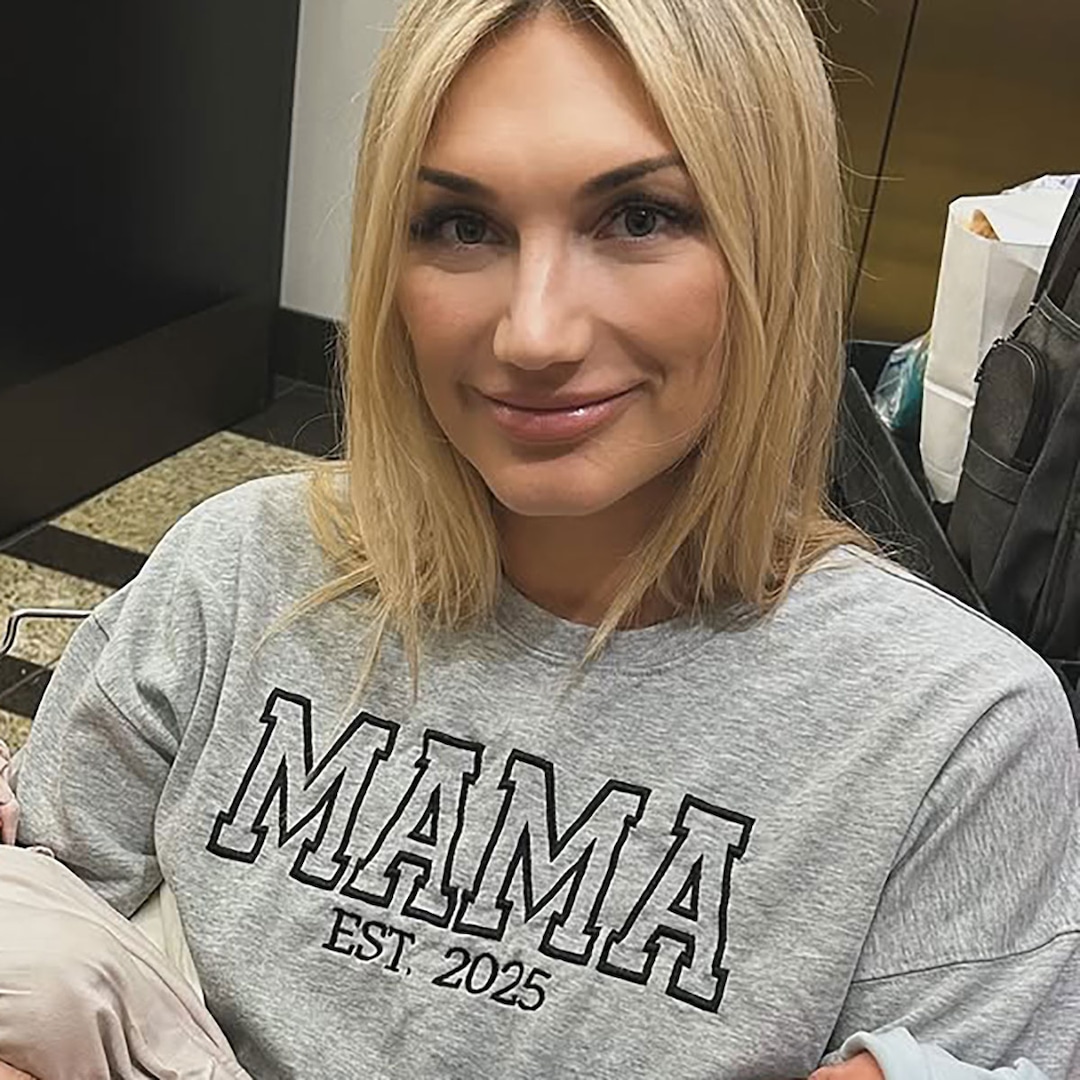












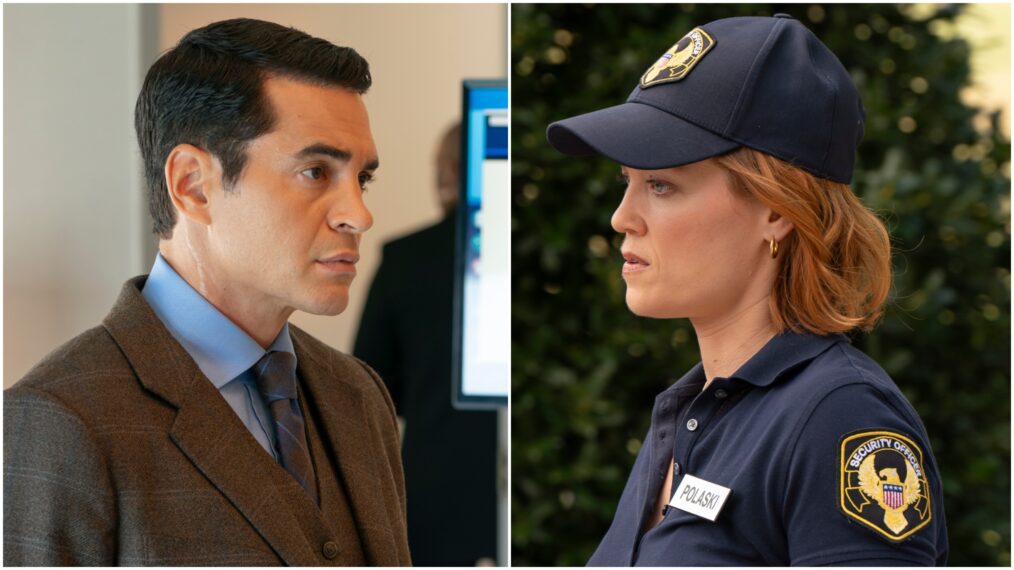


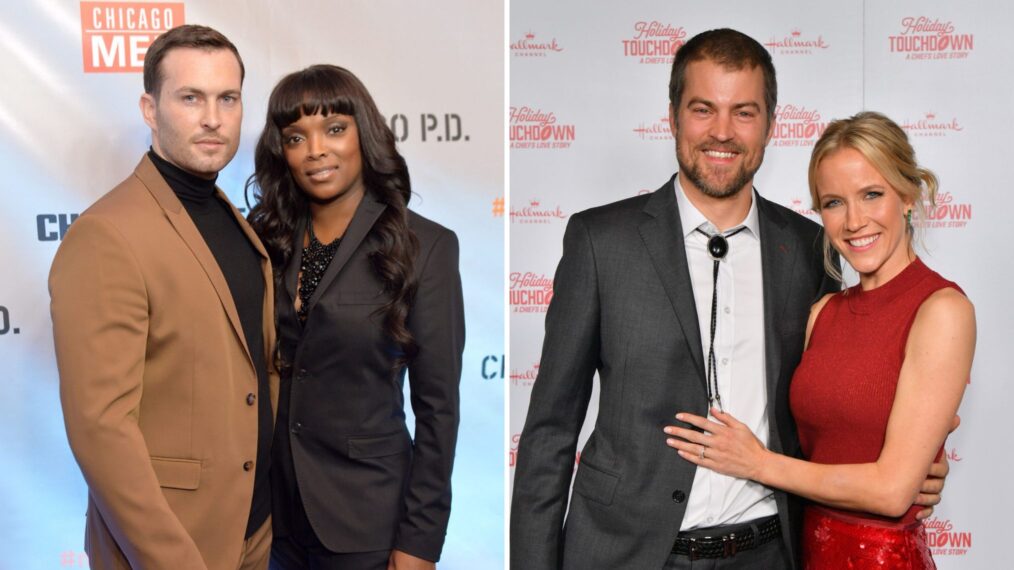













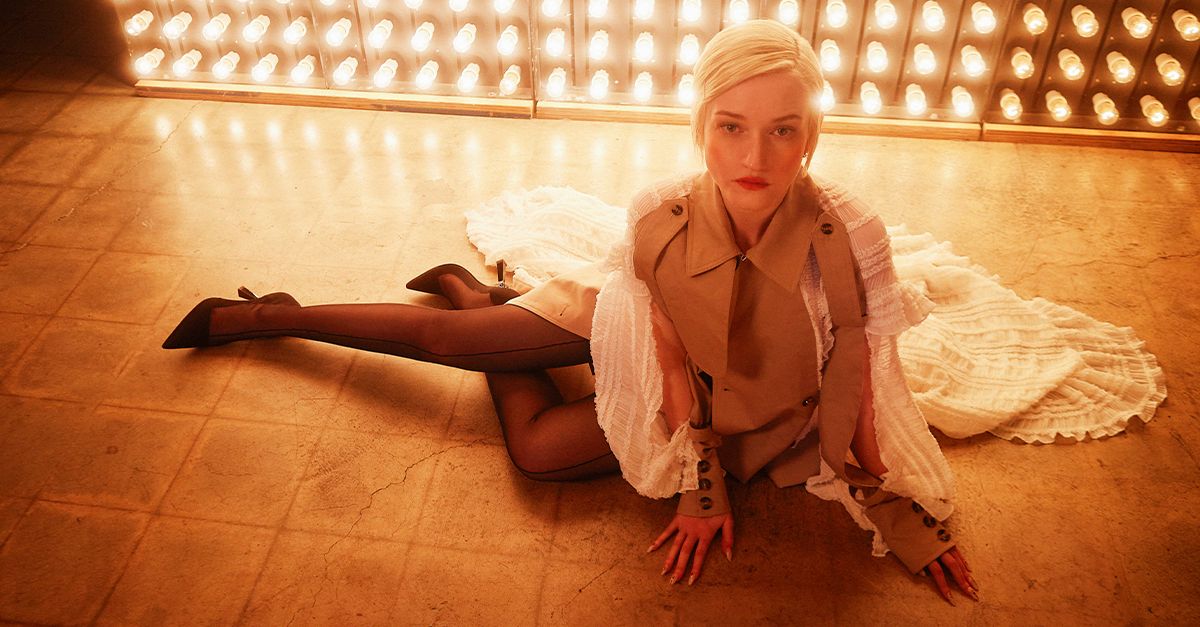




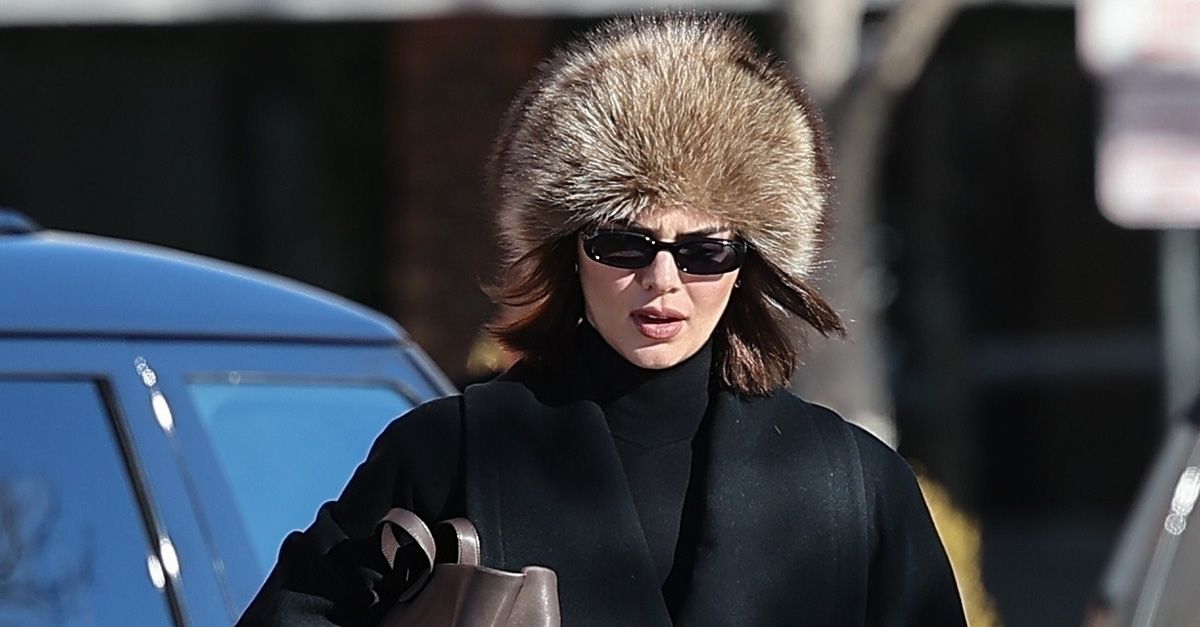














![Mason Ramsey – Twang [Official Music Video] Mason Ramsey – Twang [Official Music Video]](https://i.ytimg.com/vi/xwe8F_AhLY0/maxresdefault.jpg)





















